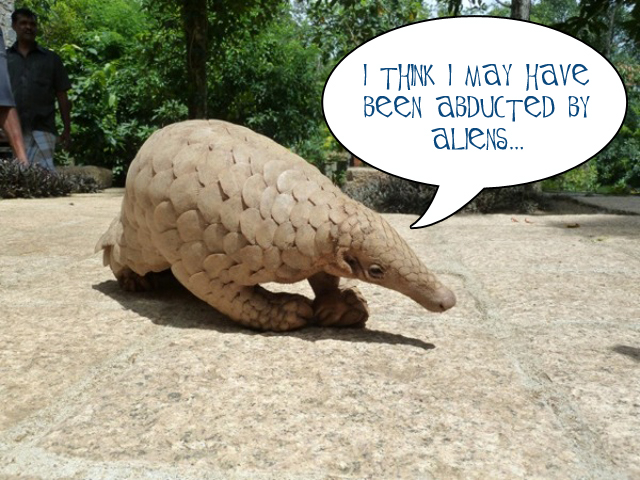Indian pangolin hitches a ride in the chassis of a new car.

A driver transporting a new car from a showroom in northern India was quite surprised when he discovered a rare creature stowed away in the chassis of the vehicle.
The Express Buzz reports that the man was en route to Tillavur, when a friend who was following behind him noticed something peculiar protruding from the automobile and suggested they pull over to have a quick look.
When they stopped near Porur, an Indian pangolin hopped out of the car’s chassis and headed straight for nearby bushes.
After the forest department was called in, forest guards captured the animal and safely returned it to the wild where it belonged.
Indian pangolins are classified as ‘Near Threatened’ on the International Union for the Conservation of Nature’s (IUCN) Red List of Threatened Species and their numbers are dwindling, due primarily to their being plundered by profit-seeking hunters, traders, and organized crime syndicates who sell them in the black market traditional Chinese medicine trade.
Insatiable demand for pangolins
According to wildlife trade monitoring network, TRAFFIC, pangolins are the most commonly encountered mammals in the illegal wildlife trade in Southeast Asia.
These animals are in high demand in East and Southeast Asia, predominantly in China and Vietnam.
There, the flesh of adults and fetuses are consumed as delicacies and for attaining superstitious ‘health benefits’, while their scales are used to make traditional Chinese medicines.
Pangolins’ body parts and scales are credulously used as a “cure-all” remedy for things like reducing swelling, improving liver function, weight loss, stimulating blood circulation, and enhancing lactation in breast-feeding women.
There is no scientific evidence to back any of the medicinal claims made about pangolin body parts.
In fact, rhino horn and pangolin scales, much like our own hair and nails, are chiefly composed of keratin and scientific studies have repeatedly shown rhino horn to be void of any curative properties.
Read more about the illegal pangolin trade here.
Author: Sarah Pappin. Read more about Sarah here.
Image: By Dushy Ranetunge (own work) via Wikimedia Commons






Comments are closed.